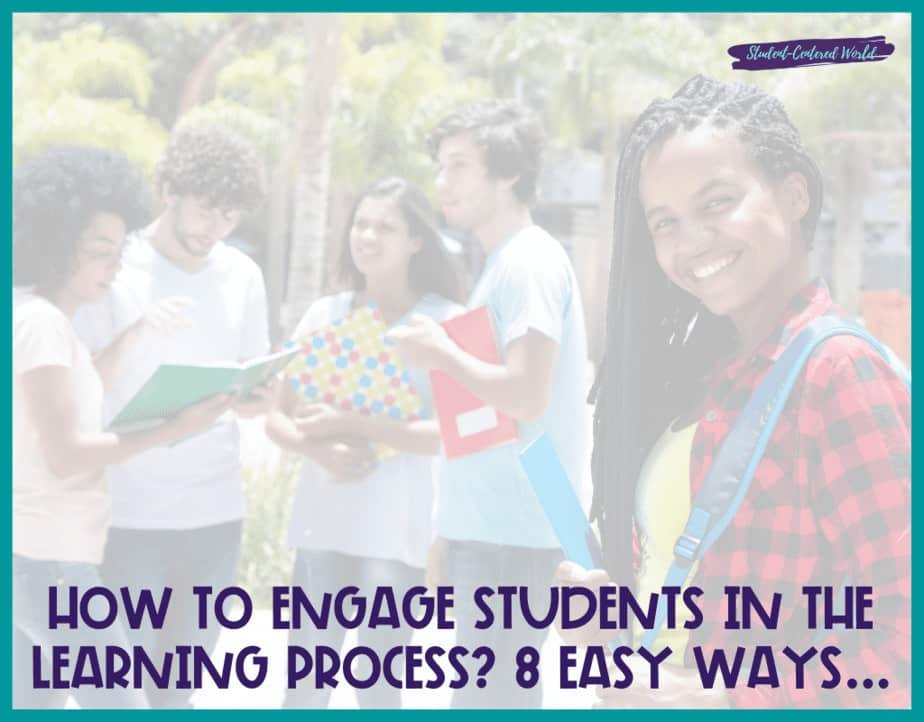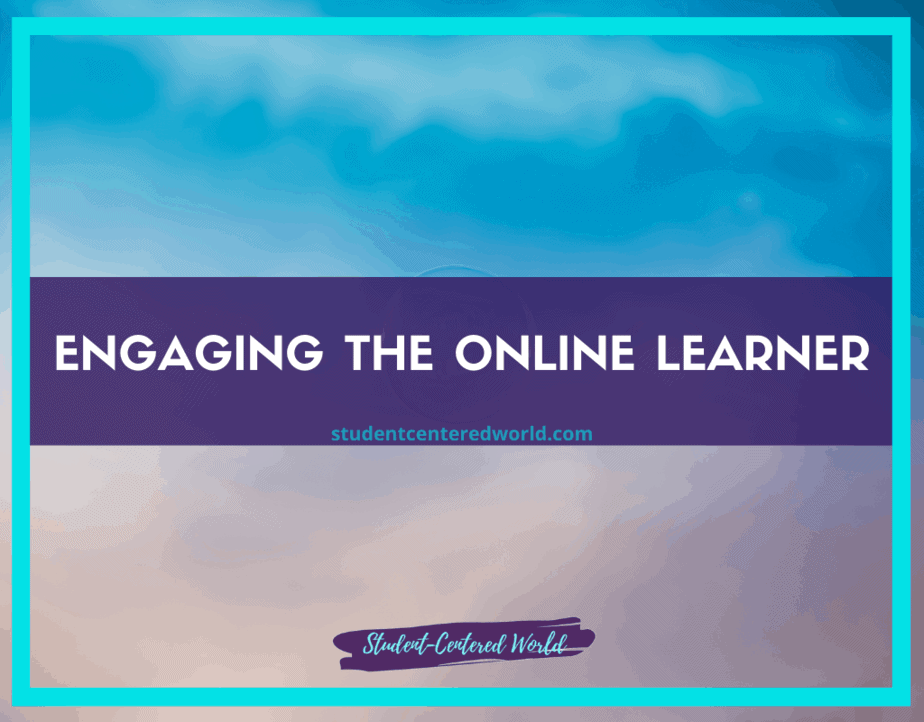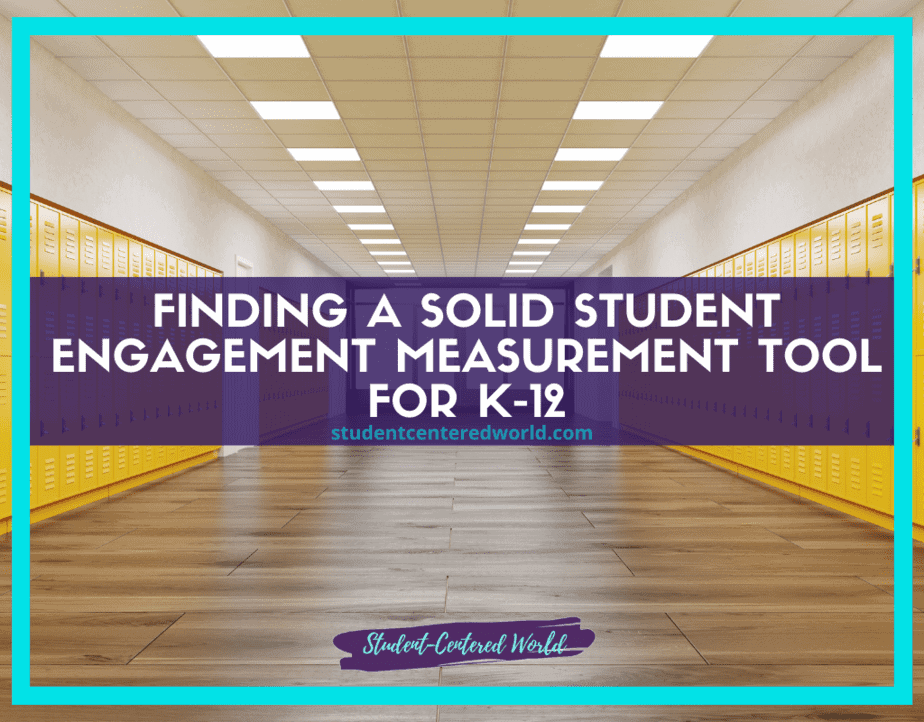How to Engage Students in the Learning Process? 8 Easy Ways…
More so now than ever, teachers are wondering how to engage students in the learning process. Classroom engagement seems like it is at an all-time low, leaving teachers not only wondering how to engage students in the learning process but wondering if it’s even possible anymore.
Don’t fret; it is still possible, it just may look a little different from what we are all used to. Let’s look at some tools that can help you engage students in a variety of ways.
What does “Engagement” mean?
But first, it is important to define what engagement actually means. There are three different kinds of engagement: emotional, mental, and physical. If students have any one of those three types of engagement “on”, they will be more likely to learn and absorb the lesson.
If you’re wondering how to engage students in the learning process, this is it.
The first way we can engage students is through their emotions by giving them something to feel. Students tend to remember things better when they connect with them emotionally. Showing a movie (that deals with the topic at hand) or allowing them to create something (with art, acting, writing, etc.) can trigger their emotions and allow them to connect to the information better.
The second way we can engage students is through their imagination (and thus, their creativity). By allowing them to create something (through art, acting, writing, etc.), we are allowing them to put themselves in someone else’s shoes which enables them to use their own life experiences to help them learn.
The third way we can engage students is through their curiosity. By allowing the class to explore an area of interest, will allow students to focus on what interests them — thus making it easier for them to pay attention and absorb the information being shared.
This is exactly how to engage students in the learning process because what seems like a simple thing has major effects on student learning because it allows students to connect to the lesson on a much deeper level and thus enabling them to learn and retain the information better.
The next time you’re wondering how to engage students in the learning process, think about emotions, imagination, and curiosity — because these are three things that will open doors for student engagement.

Important Pieces of Implementing
We know that it is a delicate balance to get this just right. Here is what you’ll need to be aware of:
1) Think about the lesson before making any plans
Some extra thought needs to go into preparing for how you will implement tools like movies or art in lessons. You may think you’re just showing a movie about something, but if it is five minutes too long or not interesting to the students, they will not learn anything.
2) Think about whether this lesson needs to be visual at all
Sometimes it’s better for students to process information in another way than having to visualize it. For example, an English teacher may want to show a movie about the life of Maya Angelou. But if students have not read her book “I Know Why the Caged Bird Sings”, it may be better for them to just read from the book rather than have to visualize what is going on without context.
3) Think about how you will integrate other tools
There is no need to stop at just visuals – there are many other tools you can use with students, such as writing prompts. This will only further the lesson by allowing them to apply what they have learned in multiple ways.
It is important to remember that when trying any new tool out with students, you may want to start small and then expand upon that as you see if it is going to work.
The next time you’re wondering how to engage students in the learning process, consider these tips and see if it makes a difference! Now that we’ve gone over some ways we can engage students, let’s look at how we can actually implement this in your classroom.

Putting it Into Action
First, when you’re planning a lesson, map out the entire thing. Plan how long each activity will take and what is needed for that activity. Leaving things to the last minute will get you side-tracked and you won’t get everything done.
Before getting students started on an activity, make sure all of their materials (pencils, paper, etc.) are ready. This helps avoid unnecessary distractions for them when they need to get something like a pencil or notebook before continuing on with the activity.
A great way to engage students is to use visuals and text-to-self connections while teaching lessons. Visuals (graphic organizers, charts and graphs, etc.) help students better understand information by putting it into a visual format that can be understood much easier than words alone. Text-to-self connections also known as “self-talk” are when students have to use situations from their lives in order to better understand the topic. This is powerful because they are using their own experiences in order to build off of, which enables them to comprehend the lesson much more easily.
Another way to engage your students is through incentives. A great example of this would be “Show What You Know” days. This is where the students are given a task to complete or an assignment where they have to show what they have learned through their work. When done correctly, this will get the students more involved in the lesson and help them retain much more information than before because it helps them connect with the lesson on a deeper level — which makes it easier for them to learn.
Finally, another great way to know how to engage students in the learning process is through small groups or partner work. This helps create a more comfortable environment where students can speak up and express their ideas easily because of the smaller group setting they are in. Not only does this enable students to speak more freely, but it also creates deeper connections between the students.
In today’s world, it is becoming clearer each day that our incoming students need to be more prepared with not only their academics but also their social and communication skills as well. A big part of this preparation comes from how teachers engage students in the learning process. By making sure they are actively participating in not only their own education but also the education of their peers, our students will be more equipped for success.
How to engage students in the learning process….
Here are 8 ways to help you implement more engaging activities and know how to engage students in the learning process. These engaging activities will increase student-to-student interactions, academic talk time, and improve students’ speaking skills.
1. Provide specific speaking opportunities that promote higher-order thinking.
Encourage debate, see where different opinions come from, and create a respectful environment for people to share their thoughts.
2. Use group activities as learning tools.
Use cooperative learning techniques so students feel they are part of the class and not just another face in the crowd.
3. Promote opportunities for students to talk through academic content related to your lesson(s).
This can be done through a variety of ways such as student-led conferences, fishbowl discussions, and informal chats with the teacher.
4. Give students time to talk in pairs or small groups during class.
You may want to schedule this for before your lesson begins after it is completed, or both!

5. Give students the opportunity to communicate with each other by means of writing.
You could have them ask each other questions about their opinions on the lesson, write character dialogue for a multigenre project you are doing, or think of possible solutions to open-ended problems.
6. Play games that promote academic talk time and higher-order thinking.
By providing students with games that they are familiar with, you can help them feel more comfortable speaking in class which will ultimately lead to higher-order thinking.
7. Find ways for your students to contribute and be involved within the group work process.
Having all of the responsibility on one student is not only hard but is not ideal in most academic environments (classrooms, study groups, etc.).
8. Assist students with developing their speaking skills whenever possible.
This can be done by providing opportunities for them to practice in front of the class or provide positive constructive feedback after they have presented their group’s work.
Don’t just stand there! These are eight ways you can engage students and help them be more active in the learning process! Implement some of these today to see an increase in academic talk time, communication between peers, and a deeper understanding of course content.
In conclusion, we know that there is a delicate balance between how much thought is needed before implementing different tools with students, but by thinking about these few important pieces, you can have a successful lesson and know specifically how to engage students in the learning process. So next time you wonder how to engage students in the learning process – think about the why, the what, and the how of it all.
Stop Driving the Teacher Struggle Bus
Are you struggling with student engagement, apathy, or keeping your class on track?
💫💫 There’s hope! 💫💫
Join my free teacher workshop “Choosing Choice” and in just 60 minutes, you’ll craft a practical plan to revitalize your teaching. Discover the magic of student choice in boosting engagement, gain quick implementation ideas, and explore strategies for year-long success.
Unlike overwhelming workshops, my approach guides you in real-time, providing more classroom options, reducing stress, and giving you more personal time.
Plus, you’ll earn a 1-hour professional development certificate and have 7 days of access.
Don’t miss this chance to transform your teaching; click below to secure your spot now!






